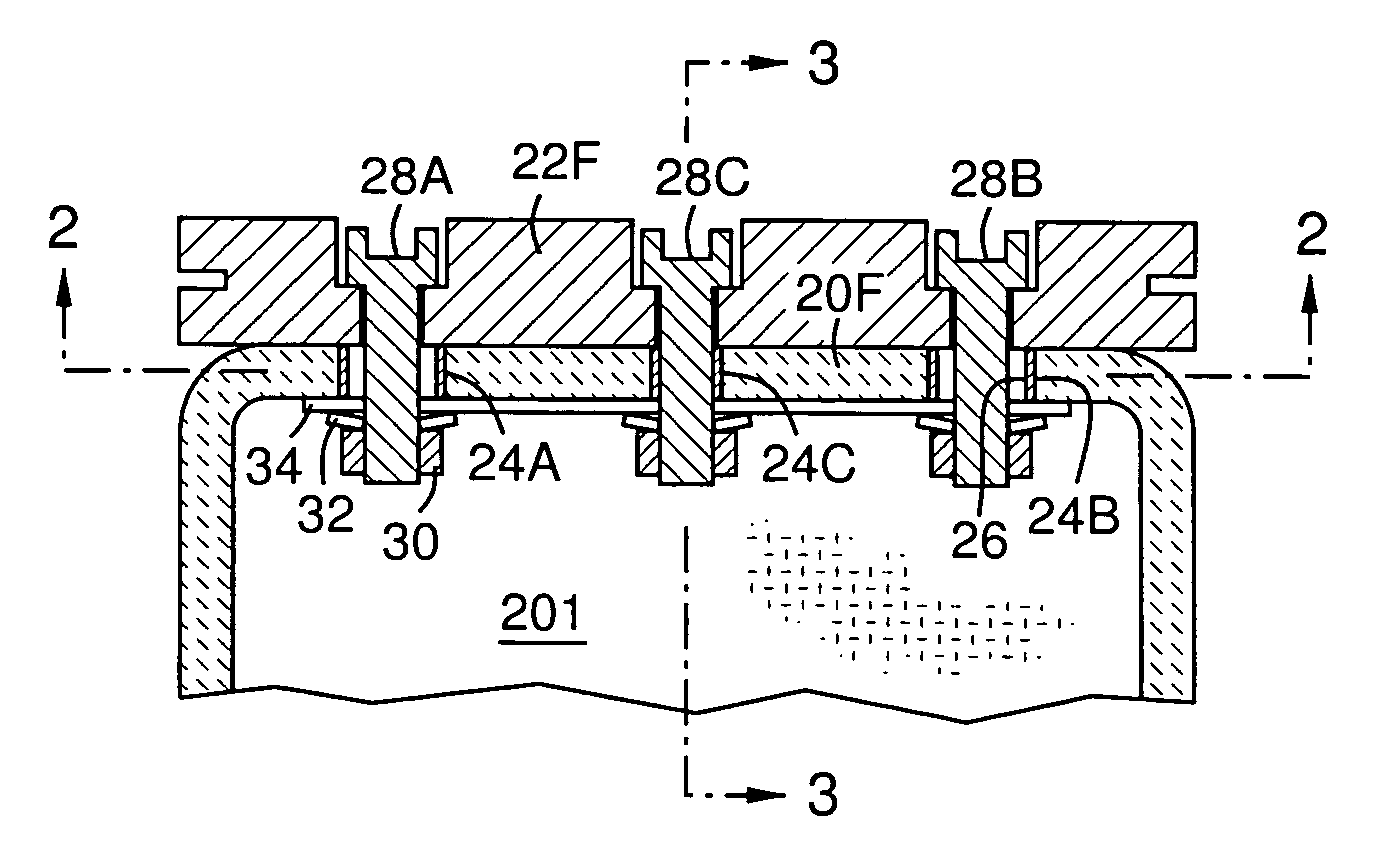CMC to metal attachment mechanism
a technology of metal attachment mechanism and clamping mechanism, which is applied in the direction of fastening means, blade accessories, machines/engines, etc., can solve the problems of less strain tolerance, wear and/or fatigue, and less brittle nature than metal
- Summary
- Abstract
- Description
- Claims
- Application Information
AI Technical Summary
Benefits of technology
Problems solved by technology
Method used
Image
Examples
Embodiment Construction
[0017]The first design consideration in the attachment of a CMC component to a metal component in a dynamic, high temperature environment is how to clamp the CMC hard enough against the metal to prevent relative vibratory motion while still allowing for the two components to grow different amounts due to temperature changes. FIG. 1 shows such a solution. A CMC component 201 has a wall 20F that is mounted against a metal wall 22F by three bolts 28A, 28B, and 28C. A nut 30 on each of the bolts 28A, 28B, 28C clamps the CMC wall 20F against the metal wall 22F with a retaining force in a range between a lower limit below which sliding is present between the CMC wall 20F and the metal wall 22F due to operational vibrations in the CMC and metal components 201, 22F, and an upper limit above which it prevents relative sliding of the walls 20F, 22F due to differential thermal expansion or above which it exceeds a stress limit in the CMC wall 20F, the range being non-inclusive of the upper and...
PUM
| Property | Measurement | Unit |
|---|---|---|
| clamping stress | aaaaa | aaaaa |
| thermal expansion | aaaaa | aaaaa |
| elongation | aaaaa | aaaaa |
Abstract
Description
Claims
Application Information
 Login to View More
Login to View More - R&D
- Intellectual Property
- Life Sciences
- Materials
- Tech Scout
- Unparalleled Data Quality
- Higher Quality Content
- 60% Fewer Hallucinations
Browse by: Latest US Patents, China's latest patents, Technical Efficacy Thesaurus, Application Domain, Technology Topic, Popular Technical Reports.
© 2025 PatSnap. All rights reserved.Legal|Privacy policy|Modern Slavery Act Transparency Statement|Sitemap|About US| Contact US: help@patsnap.com



